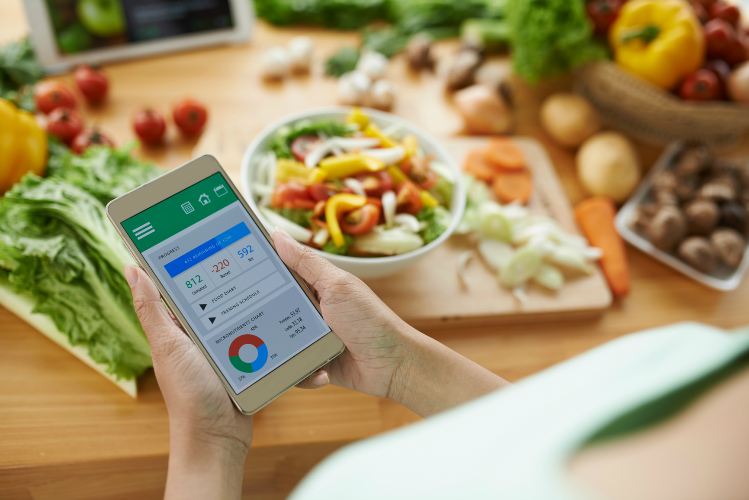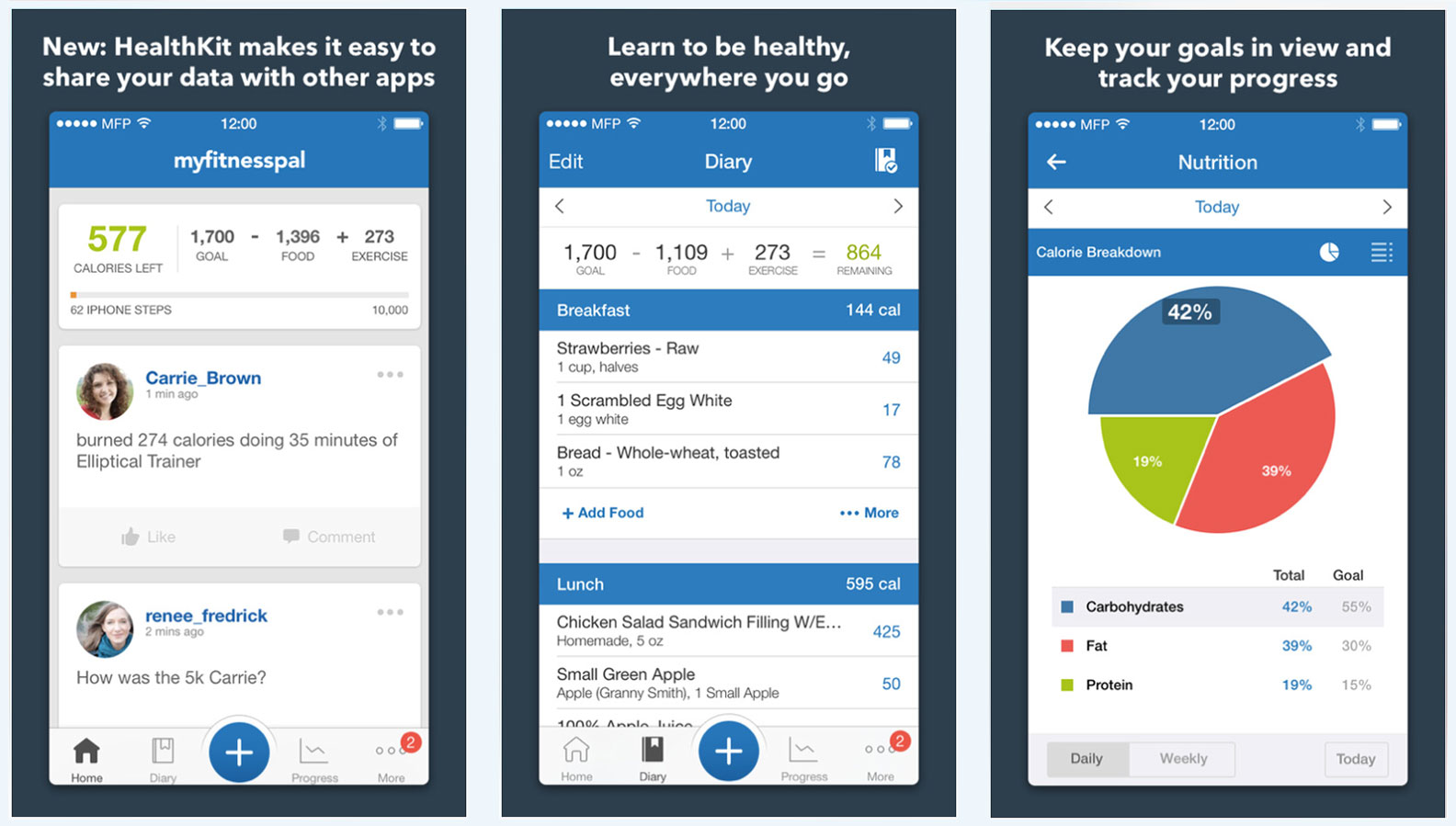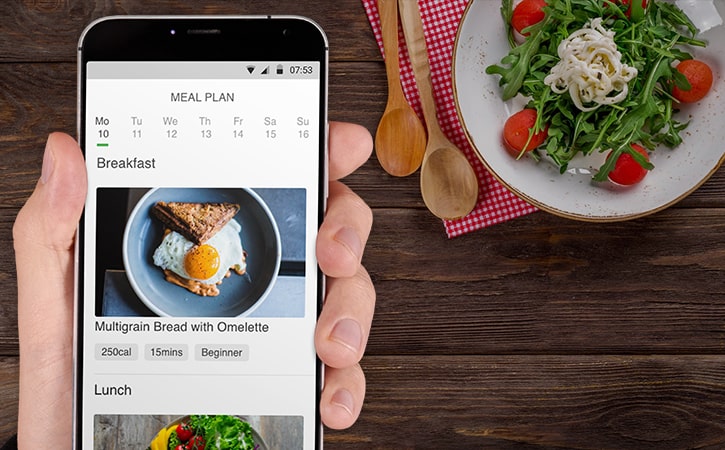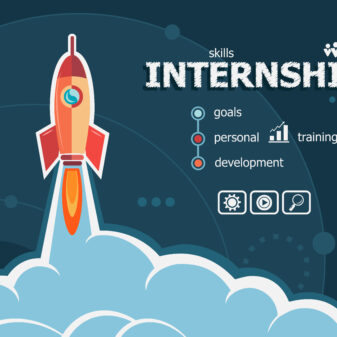Modern society is becoming more and more conscious about healthy living, and the latest technologies come to assist in this matter. Isn’t it so handy when your cell phone can calculate all calories, advise on exercises specifically for you or show your progress for the past few months? This is what fitness apps are made for.
We shall start with a bright representative of diet tracking mobile service, shall we?
MyFitnessPal
MyFitnessPal is considered to be one of the most popular food and nutrition tracking tools nowadays. The service calculates calories for users, considering how active (physically) the person is during the day. Over 50 million MyFitnessPal users are happy with its services. The platform also boasts multiple positive feedback.
MyFitnessPal key features
- The service monitors what specific user eats and what nutrients he gets every day.
- A database provided by the program includes over 2,000,000 foodstuffs. Given the database gets regularly updated. A smart idea was to make the mentioned resource be reachable offline as well.
- A soon as a specific recipe gets into the database, its calories are to be calculated.
- Users are free to make an endless list of favorite products.
- The platform provides the audience with over 350 fitness lessons. Moreover, the audience can come up with their own exercise list.
- There is MyFitnessPal social network where users can check their friends’ results.
- Customers can apply multiple filters, like, gender, age, physical activity volume, etc. to set their own personal goals.
- Users can use the service to monitor their own progress.
- Every day the app informs users about nutrients and calories they obtain.
Must have features of a great diet and nutrition platform
Now it’s time to discuss what functionalities make fitness platforms practical, useful and successful. Sometimes developers assume that the hardest part is to make users upload their program. However, the reality is that the funniest part begins right from that moment, as the main task from now on is to encourage the audience to apply the service more often. The following features shall make developers “hook” users to their apps.
- Observing the progress
It’s clear that people would love to see the dynamics of their progress in building muscles, for instance. Thus, why not to offer users some kind of statistics on their results? That would be a good idea to present it in an infographic to make it clear and visible.
- Food logging
To achieve better progress people prefer to write down everything they eat within a day. That would be pretty convenient to have such a feature in mobile service to avoid writing in paper notepads.
- Calculating calories
The previously mentioned functionality won’t be valuable unless there is a possibility to count the calories. Thus, calorie calculator turns to be mandatory, so users will know food energy value.
- Monitoring activity
Diet control is important, however, it shall get along with activity tracking as well. Knowledge of calories quantity and energy costs is vital. That is a tool to watch the diet to reach more effective results.
- Wearable gadget
Another clever thought would be to connect the meal planner platform with some wearable device, like, Apple or Android watches, fitness bracelets, etc. Users will definitely enjoy it.
- Push notifications
That could be a great tool to express some care to the audience. Those push notifications serve as reminders to buy some food or to exercise. The most important in here is to be polite. A little bit of humor could be great.
Moving on, it’s time to see what developers shall consider while building a diet tracking service to profit from it. Interesting?
Monetization issue
It’s pretty expensive to build a fitness platform for Android and iPhone gadgets. Thus, the monetization aspect turns out to be even more important. Obviously, developers want not only to recover their investments, but also to make money from an already existing application. There are few possibilities to make those dreams come true. And we are to describe the main of them.
# In-app advertisement
Such an approach is commonly applied in meal planning programs. The idea here is to attract the maximum number of people and to learn their behavior. Received information on their preferences could be used to advertise various goods and services which that audience most likely prefer.
As a result, developers are to provide some space in their fitness platform for advertising. That would be a solid source of income.
# Freemium
It’s a great tool for a program monetization. Designing a Freemium model, developers shall come up with two sets of parameters. One of them would be basic with no fee applied. The second option would offer more attractive characteristics to make users want to pay for those additional functionalities.
Developers’ objective is to bring users to start with a standard set of features and, eventually, to encourage them to switch for a paid package.
# Paid applications
With such approach users are to pay to use a fitness platform. Developers task is to show the program advantages in the best possible way to interest the audience, so they are willing to install it right after they pay for it. App owners work hard to present “one-of-a-kind” characteristics of their creations by means of the App Store or Google Play.
On the one hand, developers receive money right away. At the same time, they have to have really killing features to persuade users to pay without even trying a free version.
# In-app purchasing
Here we are talking on the approach to sell products (virtual and real) through diet apps. It would make sense to choose those goods to be relevant to the service theme. In the best case scenario, such instrument shall turn food and nutrition program into additional income resource.
# Subscription
It’s a little bit similar to a freemium model, but with some distinguishing features. Mentioned monetization way provides the audience with the access – for free – to the service content. At the same time, the app functionalities shall be available only for the payment.
Thus, users are free to enjoy a meal planning platform to some extent. And in case they would like to take advantage of additional service possibilities, they are welcome to get a paid subscription. The period may vary as well – traditionally, from 1 to 3 months.
Given the instrument let users try the service before they have to pay, and they appreciate it.
We hope that now you have a clearer picture of what fitness app developing is. Such a challenging process is also an exciting one. Consider it as a game when you have to win customers’ loyalty, beat all your rivals and earn on it. Sounds fun, right?










